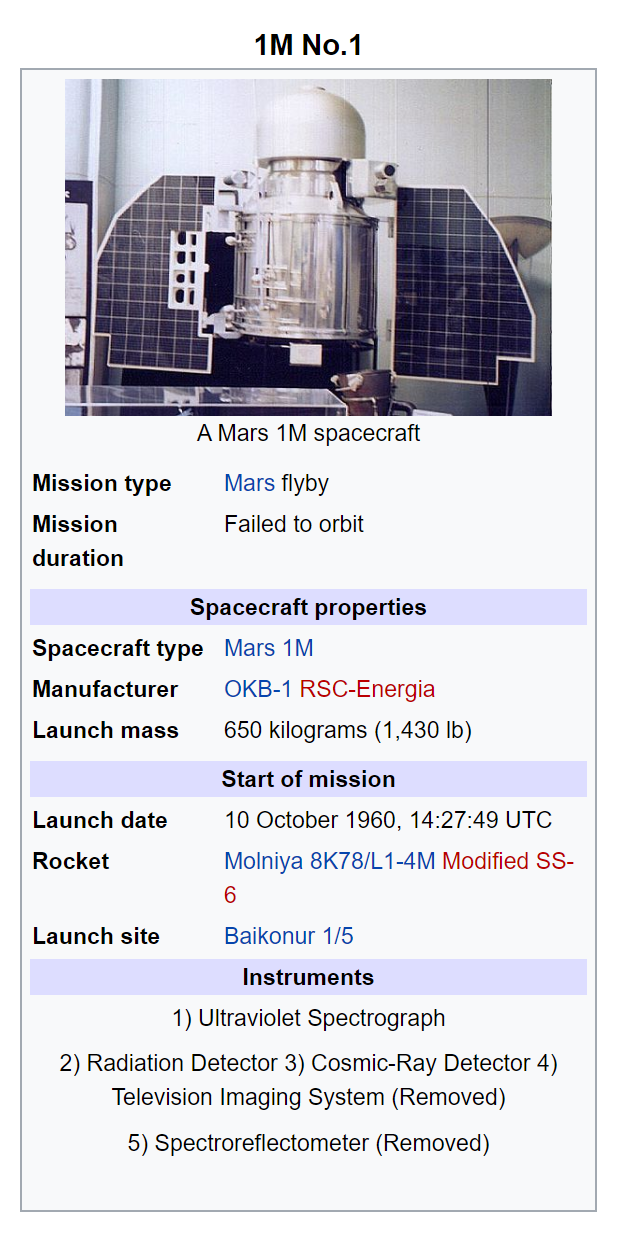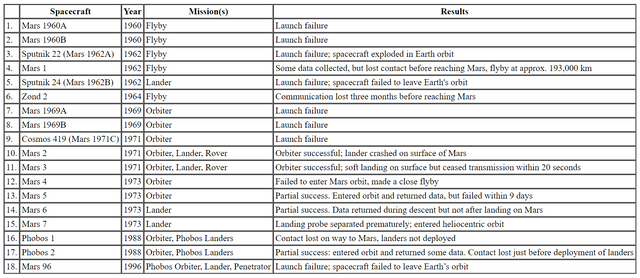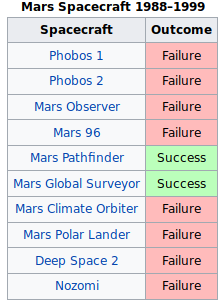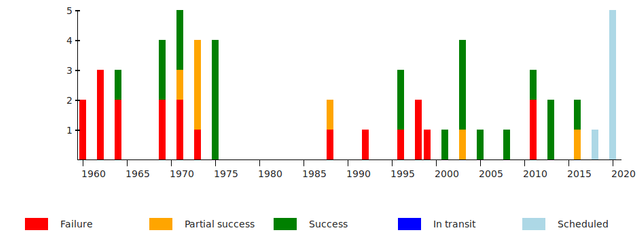
In the early 1960s there was a race to space, and to set foot or lander on planets before other countries could. Even a flyby would be great bragging rights and will give scientists alot of data to look over. Russia attempted many Mars flybys and all failed and the United States were the first to do a successful flyby in 1964.
Mars 1960A / Marsnik 1:

Named Mars 1960A by NASA techs made by RSC-Energia and OKB-1, it was the first probe sent as part of the Soviet Union's Mars program. It was meant to be used for conducting flight testing system and to study the inter-planetary environment between Earth and Mars, however it was lost in a launch failure before it could start its mission.
The probe had the following hardware for testing:
Ultraviolet Spectrometer
Radiation Detector
Cosmic-Ray Detector
Television Imaging System and the Spectroreflectometer was removed due to size constraints.
On October 10th 1960, During the ascent vibration in third stage of rocket provoked by malfunction of gyro and it damaged the attitude control system of the rocket. The flight was hindered by vibrations generated by synergy of upper stage booster. Following this issue, the horizon sensor disconnected from the booster and the rocket descended from normal flight path angle. As a consequence the rocket's 3rd stage commanded to stop ignition after 5 minutes into flight, during this stage the spacecraft got to an altitude of 120 km before re-entry.
After, the spacecraft re-entered and disintegrated in LEO and its debris fallen over Siberia with 4,800 km down range. It failed to achieve low earth orbit.
Mars 1960B / Marsnik 2:

Named Mars 1960B by NASA techs, planning on succeeding where the previous space probe failed. It was launched on October 14th 1960 from Site 1/5 at the Baikonur Cosmodrome. During prep work for the launch, an oxidizer leak in the 2nd stage caused liquid oxygen, at cryogenic temperature, to spill around the engine's fuel inlet valve. This froze the stage's RP-1 propellant, leaving the engine unable to fire. As a result, the spacecraft failed to get to Earth orbit
After these two failures, the USSR would wait another two years before attempting another Mars Mission. But their first attempts will always be remembered as failures. And hopefully learn from their mistakes.
Ever since the first attempts to get a probe on or even near the planet has ended in disaster over and over again. From the 1960s through the 1980s there 20 out of the 30 total missions to Mars failed and its one of its moons Phobos during those decades.

Even into the 1990s issues were still occurring on space craft with the destination of Mars.

Charts can be found on Wikipedia under "List to missions to Mars"

Above is a chart starting in 1960 through 2020 showing failures, partial success, success, and scheduled.
Sources: https://en.wikipedia.org/wiki/List_of_missions_to_Mars
Addresses below to help me buy better camera equipment and support me to travel to locations to do photo and video and overall great blogs in new places. I would be happy to list some of the contributors in my posts for donations that help me along the way.
| Coin | Address |
|---|---|
 BTC: BTC: | bc1qhfmvd2gywg4fvrgy2kkkkyqta0g86whkt7j8r7 |
 LTC: LTC: | ltc1qdyzm5cwgt8e2373prx67yye6y9ewk0l8jf3ys9 |
 DASH: DASH: | XkSqR5DxQL3wy4kNbjqDbgbMYNih3a7ZcM |
 ETH: ETH: | 0x045f409dAe14338669730078201888636B047DC3 |
 DOGE: DOGE: | DSoekC21AKSZHAcV9vqR8yYefrh8XcX92Z |
 ZEN: ZEN: | znW9mh62WDSCeBXxnVLCETMx59Ho446HJgq |